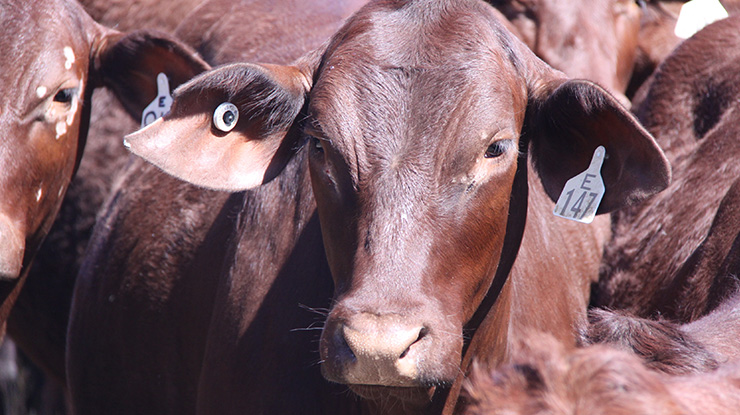Polled gene testing for a more sustainable herd
22 October 2020
 Advancements in poll testing have been particularly important for northern herds where horned breeds are prominent.
Advancements in poll testing have been particularly important for northern herds where horned breeds are prominent.
Improved animal welfare, economic benefits to producers and positive community perception are just some of the impacts that come from breeding polled cattle, paving the way towards a more sustainable beef industry.
While 73% of the national cattle herd* is already genetically polled, advances in testing for the polled gene – which will guide the purchase of polled sires – is an important step towards increasing the percentage of polled cattle within the Australian herd. MLA is supporting research to achieve this.
|
Four benefits of a polled herd Breeding for a polled herd offers a range of benefits across the supply chain, including:
|
Evolution of poll gene testing
University of New England Animal Genetics and Breeding Unit Research Fellow, Dr Natalie Connors, is well versed in polled genetics and testing. She’s spent five years researching and improving understanding in this area and, throughout that time, she’s witnessed the evolution of testing for polled genetics.
“The original poll test was a microsatellite DNA test rolled out in 2012 under the Beef CRC,” Natalie said.
“It required breeders to provide a DNA sample from their animals, such as tail hair, and a phenotype, like horned, scurred or polled, which was then tested to estimate a horned or polled genotype.”
The genotyping landscape changed in 2017, with commercialisation of genotyping in Australia and an increase of labs.
This led to the adoption of the SNP test, which reads the DNA to pick up variations relating to polled animals. MLA’s funding of the SNP test focused on improving its accuracy in Bos indicus animals.
“The advantage of the SNP test is that producers don’t need to provide phenotypes, so it’s a simpler, more efficient and more accurate test.”
Testing for scurs
Natalie said while SNP testing has been successful in identifying polled and horned animals, there’s still work to be done on testing for scurs (small horn-like structures that aren’t usually attached to an animal’s skull).
“Unfortunately, when some producers are dehorning, they’re getting rid of anything that looks like a horn, including scurs, making collecting phenotypes for these animals very difficult,” Natalie said.
“We already understand the genetics of horns, and adoption of the polled gene will result in breeding them out, but now the focus is on achieving the same with scurs.”
A critical step in this process is genetic data from seedstock breeders.
“We’re encouraging breeders who are aware they have scurs to contact their breed society or BREEDPLAN and submit the data for further research to be conducted by the Animal Genetics and Breeding Unit,” Natalie said.
“This will let us look at the genotypes of those animals, compare genomic data and develop a test for scurs that will further advance poll herds and industry benefits in the future.”
* Source: Australian Beef Sustainability Framework, 2020


